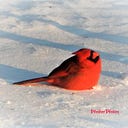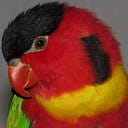Member-only story
Pets versus pests: Does the global exotic pet trade favor invasive pests?
Exotic pets — companion animals that are not native to the area where they are kept — can become invasive pests when they escape or are released by pet owners, breeders, collectors and wholesalers
© by GrrlScientist for Forbes | Twitter | Newsletter
It’s no secret that the global market for exotic pets is large and growing, particularly recently, because so many of us stayed home for the past year to comply with the coronavirus pandemic quarantine restrictions.
In the last decade alone, billions of individuals comprising thousands of animal species were traded annually, fueling a multibillion-dollar global industry (i.e.; ref and ref). This rapidly increasing demand for pets has been driven by the easy access provided by the internet and, increasingly, by bored and lonely housebound people who are looking for ‘something different’ — nontraditional or ‘exotic’ pets — basically, animals that lack a long history of domestication (ref).
But what happens to these exotic non-traditional pets when they get too big, too expensive, or too ornery or too boring to keep in a home? Often, they are intentionally released by their keepers or, sometimes, they escape. And this offers the potential for establishment of nonnative species. Free-roaming non-native…

